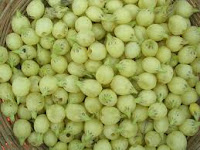Alpine lady’s mantle is smaller than Achemilla mollis or common Lady’s Mantle, and is around a third of its size, although its medicinal properties are said to be more potent than the more common plant. Its leaves are edged with silver, making it an attractive rockery plant.
It grows near small streams in Scotland
 The roots have astringent properties as do the leaves as the plant is rich in tannin, making it good externally for cuts and wounds and internally for diarrhoea, among other problems. Both of the Lady’s Mantles were considered to be among the best of the vulnerary (wound-healing) herbs. As the common Lady’s Mantle it is a good herb to use when you have menstrual problems. It ranks with self-heal, marsh woundwort and bugle.
The roots have astringent properties as do the leaves as the plant is rich in tannin, making it good externally for cuts and wounds and internally for diarrhoea, among other problems. Both of the Lady’s Mantles were considered to be among the best of the vulnerary (wound-healing) herbs. As the common Lady’s Mantle it is a good herb to use when you have menstrual problems. It ranks with self-heal, marsh woundwort and bugle. Nicholas Culpeper writing in the 17th century has this to say about it:-
 “Government and virtues. Venus claims the herb as her own. Ladies' Mantle is very proper for those wounds that have inflammations, and is very effectual to stay bleeding, vomitings, fluxes of all sorts, bruises by falls or otherwise, and helps ruptures; and such women as have large breasts, causing them to grow less and hard, being both drank and outwardly applied; the distilled water drank for 20 days together helps conception, and to retain the birth; if the women do sometimes also sit in a bath made of the decoction of the herb. It is one of the most singular wound herbs that is, and therefore highly prized and praised by the Germans, who use it in all wounds inward and outward, to drink a decoction thereof, and wash the wounds therewith, or dip tents therein, and put them into the wounds, which wonderfully dries up all humidity of the sores, and abates inflammations therein. It quickly heals all green wounds, not suffering any corruption to remain behind, and cures all old sores, though fistulous and hollow.”
“Government and virtues. Venus claims the herb as her own. Ladies' Mantle is very proper for those wounds that have inflammations, and is very effectual to stay bleeding, vomitings, fluxes of all sorts, bruises by falls or otherwise, and helps ruptures; and such women as have large breasts, causing them to grow less and hard, being both drank and outwardly applied; the distilled water drank for 20 days together helps conception, and to retain the birth; if the women do sometimes also sit in a bath made of the decoction of the herb. It is one of the most singular wound herbs that is, and therefore highly prized and praised by the Germans, who use it in all wounds inward and outward, to drink a decoction thereof, and wash the wounds therewith, or dip tents therein, and put them into the wounds, which wonderfully dries up all humidity of the sores, and abates inflammations therein. It quickly heals all green wounds, not suffering any corruption to remain behind, and cures all old sores, though fistulous and hollow.” The expressed juice form the plant can be applied directly to wounds and cuts and the herb is good for menopausal symptoms such as hot flushes. If you make a decoction of the whole herb, this will help with excessive vaginal discharge. Presumably this is what Culpeper meant when he mentioned that some women used it in their baths.

















